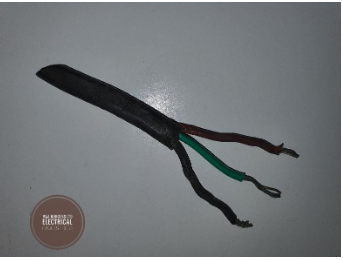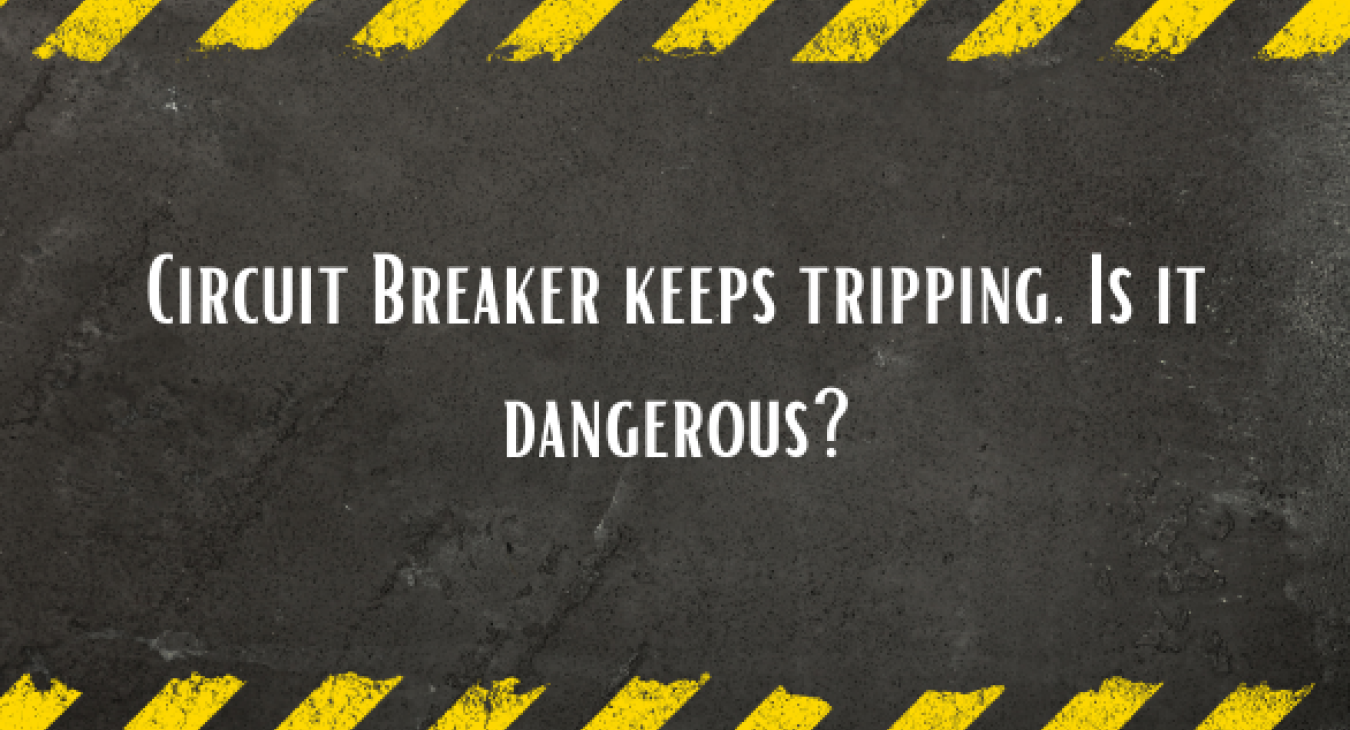A circuit breaker is a small component of your home’s electrical system, designed to protect against potentially dangerous electrical problems. When a circuit breaker keeps tripping, it’s not just a minor inconvenience; it could be a sign of underlying issues that pose serious risks.
As an experienced electrician and electrical tutor, I’ve seen first hand the dangers that can arise from ignoring this problem.
Understanding why circuit breakers trip and how to address these issues is essential for ensuring the safety of your home and its occupants.
Before we get started, if you have a GFCI (Ground Fault Current Interrupter) or RCD (Residual Current Device) tripping then there is another article for this as an electrical circuit is often protected by RCD / GFCI as well as a circuit breaker. The circuit breaker is often used to protect one specific circuit and the RCD / GFCI is used to protect several of the home's circuit breakers (groups of or individual circuits).
Back to top1) Understanding How a Circuit Breaker Works
To appreciate the importance of a circuit breaker, you need to understand how it functions. In your home’s electrical system, the flow of electricity is managed by a network of electrical wires.
Primarily hot (line conductor) wires, neutral wires, and ground (earth) wires. Electricity travels from the power supply through the hot wire, powering electrical appliances, and then returns via the neutral wire.
The ground wire serves as a safety mechanism, providing a path for electric current in case of a fault.
A circuit breaker is a safety feature that interrupts the current flow when it detects too much electricity, such as in cases of circuit overloads, short circuits, or ground faults. It’s designed to prevent the excessive current that could cause overheating, damage to electrical devices, or, worse, an electrical fire.
Is it dangerous if a circuit breaker keeps tripping? The answer is always yes!
A circuit breaker trips through two mechanisms:
Overload - A prolonged gradual overloading of the electrical circuit as would be the case with too much electrical equipment in use. In this case the circuit breaker normally clicks off gently.
Overcurrent - A large electrical current flow caused by a short circuit type electrical fault for instance. When these large fault currents are generated the circuit breaker trips with a bang as a large electrical current is disposed of.
Back to top2) Common Causes of Circuit Breaker Tripping
When a circuit breaker trips, it’s performing its job of protecting your home. However, frequent tripping is often a sign of underlying electrical problems that need to be addressed.
2.1) Overloaded Circuits
One of the most common reasons for a tripped circuit breaker is an overloaded circuit. This happens when the electrical load on a single circuit exceeds its capacity. Common household items, such as air conditioners, microwave ovens, and multiple electrical appliances running simultaneously, can easily overload a circuit. The breaker trips to prevent overheating and potential damage to the home’s wiring.
2.2) Short Circuits
A short circuit occurs when a hot wire comes into direct contact with a neutral wire, causing a sudden surge of electric current. This can happen due to faulty wiring, a loose connection, or a faulty appliance. The excessive current flow causes the breaker to trip almost instantly, as short circuits can generate a significant amount of heat, leading to electrical fires or other serious dangers.
2.3) Ground Faults
Ground faults are another common cause of breaker tripping, particularly in circuits protected by Ground Fault Circuit Interrupters (GFCIs). A ground fault occurs when a hot wire touches a grounded surface, causing the electrical current to take an unintended path. GFCI outlets are designed to trip the breaker when they detect this situation, protecting against electrical shock.

If you are unsure if you have ground fault issues or suspect that there may be inadequate grounding in your home then contact an electrician to verify the safety of your earth or ground connection.
2.4) Faulty Appliances
Appliances that are damaged or malfunctioning can also cause a breaker to trip. Faulty appliances might draw too much current or cause a short circuit, leading to frequent trips of the associated circuit breaker.
2.5) Faulty Wiring
Wiring issues, particularly in older homes, can be a significant cause of breaker trips. Deteriorated insulation, loose connections, or wiring that doesn’t meet current safety standards can all contribute to electrical problems. These issues not only cause nuisance trips but also pose serious risks, including electrical fires and electrocution hazards.

(Old Rubber Wiring from UK 1930s-1960)
Electrical wiring does not last forever and it will eventually fail causing major headaches for homeowners. If you are planning home renovations have your wiring checked and rewiring done BEFORE any major renovations take place. This will avoid ripping out that new kitchen or bathroom to rewire the home.
Back to top3) Is It Dangerous If a Circuit Breaker Keeps Tripping? (YES)
If your circuit breaker keeps tripping, it’s more than just an annoyance—it’s a warning sign that something is wrong. The immediate danger lies in the potential for electrical shock, arc flash, or even electrical fires. Over time, persistent breaker tripping can lead to further damage to your home’s wiring, electrical devices, and appliances, ultimately compromising the safety of your home.
Neglecting the issue can also result in a complete power outage in the affected circuit, leaving you without essential services. It’s important to address the root cause of the problem to prevent these dangers from escalating.
Any delay in carrying out electrical repairs is likely to lead to more expense later on due to the increased damage that has been done.
Back to top4) Steps to Take When a Circuit Breaker Keeps Tripping
If you’re dealing with a circuit breaker that keeps tripping, there are several steps you should take to identify and address the problem.
4.1) Initial Checks
Start by inspecting your electrical panel or breaker panel. Identify the tripped breaker—it will be in the "off" position or somewhere between "on" and "off." Reset the breaker by flipping it fully to "off" and then back to "on." If the breaker trips again immediately or shortly after resetting, you likely have a more serious issue. Investigation MUST be carried out; continuous resetting of the breaker will cause damage.
4.2) Identifying the Cause
To determine the cause of the problem, consider the electrical load on the affected circuit. Are you running multiple high-power devices, such as air conditioners, space heaters, or microwave ovens, simultaneously? If so, this could be a case of circuit overload. Reducing the load on the circuit may prevent future trips.
If the breaker trips even when only one or two devices are connected, the issue might be a faulty appliance or a wiring problem.
Unplug all devices on the circuit and reset the breaker. Then, plug in each device one at a time to see if a particular appliance is causing the trip.
4.3) When to Call a Professional Electrician
If the breaker is tripping with everything unplugged, it’s time to call a professional electrician. DIY electrical repairs can be dangerous, especially if you’re dealing with faulty wiring or recurring power surges. A licensed electrician can safely diagnose and repair the issue, ensuring that your home’s electrical system complies with the National Electrical Code (NEC) and local laws.
You should also seek professional help if you notice any unusual signs, such as a burning smell, buzzing sounds, or if the breaker panel feels warm to the touch. These could indicate more severe problems, such as a faulty breaker or arc faults, which require immediate attention.
Back to top5) Preventing Future Circuit Breaker Trips
To avoid future circuit breaker trips, consider these tips:
5.1) Managing Electrical Load
Distribute the electrical load evenly across different circuits to prevent overloads. Avoid running multiple high-power devices on the same circuit, especially during peak usage times. If your home regularly overloads its circuits then you may need additional circuits installed by an electrician. In my experience, older homes tend to have fewer electrical circuits and often overload the fuse box or electrical panel circuit breakers.
5.2) Using Extension Cords, Power Strips, and Surge Protectors
Use extension cords and power strips sparingly, and never exceed their rated capacity. Surge protectors can help manage power surges and fault surges, protecting your appliances and home from damage. Check your extension cords regularly and replace them when they become damaged.
5.3) Regular Inspections and Maintenance
Regularly inspect your home’s electrical system for signs of wear and tear. Older homes, in particular, may need updated wiring or a replacement of outdated fuse boxes with modern circuit breakers. Carry out visual checks every 6 months to make sure that electrical accessories are not visibly damaged and that the electrical panel is in good condition.
Any further, more in-depth checks will need to be carried out by an electrician.
5.4) Adhering to the National Electrical Code (NEC)
Ensure that any electrical work in your home complies with the NEC and local laws. This includes proper installation of ground-fault circuit interrupters (GFCIs) in areas like kitchens, bathrooms, and outdoor outlets.
Back to top6) Summary
In conclusion, a circuit breaker that keeps tripping is a serious issue that shouldn’t be ignored. Whether it’s due to an overloaded circuit, a faulty appliance, or a wiring problem, the potential dangers include electrical shock, fires, and significant damage to your home’s electrical system.
The best way to protect your home and family is to identify the cause of the problem and take appropriate action quickly, whether that means reducing electrical load, using surge protectors, or calling in a professional electrician.
By staying vigilant and proactive, you can ensure the safety of your home’s electrical system and prevent further damage. Remember, when it comes to electrical issues, it’s always a good idea to prioritize safety and seek professional help when needed.
Back to top
Read more articles
- Log in to post comments


